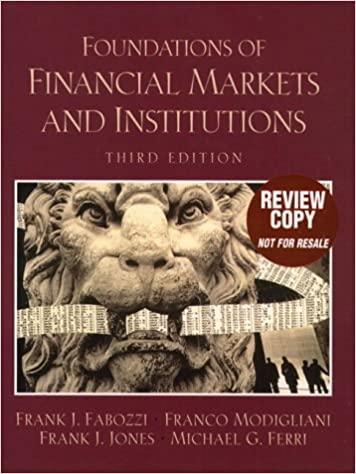Question
(A) You are asked to value corporate bonds (issued by a U.S. firm ABC) with the following characteristics: Face value = $1,000; Annual coupon=$80 (paid
(A) You are asked to value corporate bonds (issued by a U.S. firm ABC) with the following characteristics: Face value = $1,000; Annual coupon=$80 (paid in semiannual installments); Maturity = 10 years; Todays price = $1070.50 What is the Yield to Maturity for those bonds?
(B) Assume you are sure that the above bonds would provide a fair compensation for the risk of investment if YTM had the default spread of 4% above todays value of the U.S. Treasury rate with the same maturity. You are a portfolio manager tasked with investing a substantial amount of investor funds. You can either buy bonds described above in part (A) or, alternatively, U.S. Treasury bonds with 10-year maturity that offer a coupon rate of 4.59% and have Yield to Maturity equal to 4.59% (and thus trade for the price equal to the Face Value). Which investment bonds described in (A) or U.S. Treasury bonds described in (B) would you buy? Why?
(C) Imagine that tomorrow, Wall Street Journal will report that a whistleblower uncovered a significant case of accounting misconduct at company ABC. Based on that, the YTM of the bonds described in (A) will likely either increase by 4% or decrease by 4% compared to the value you computed in (A). Pick the option that you believe is FAR more likely and compute the new price of ABC bonds after the announcement.
Step by Step Solution
There are 3 Steps involved in it
Step: 1

Get Instant Access to Expert-Tailored Solutions
See step-by-step solutions with expert insights and AI powered tools for academic success
Step: 2

Step: 3

Ace Your Homework with AI
Get the answers you need in no time with our AI-driven, step-by-step assistance
Get Started


